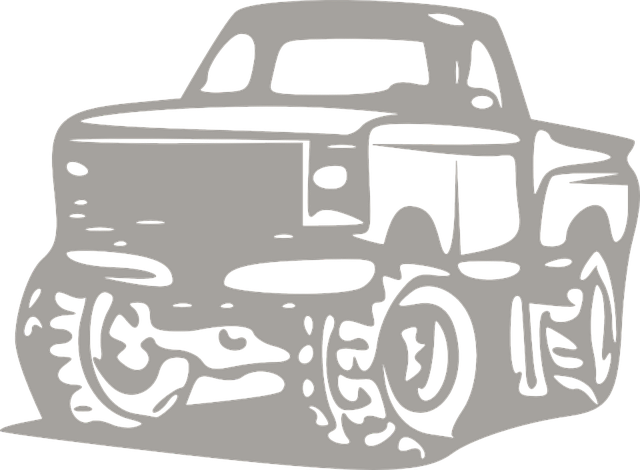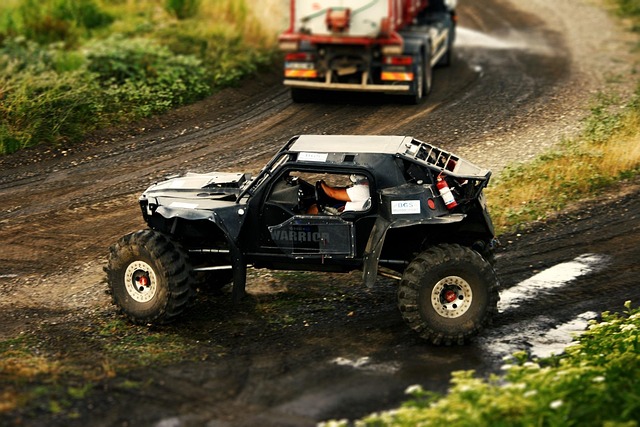QR fittings (Quick Release) revolutionize RGV (Remote Gate Valve) wheel and tire changes, offering swift attachment/detachment without tools. These systems enhance efficiency and safety for fleet managers and mechanics, saving time on maintenance. RGV wheels provide stability and durability, while high-quality tires ensure superior traction and performance in various settings. Rapid Gear Change (RGC) systems reduce tire change times but come with risks of user error, higher costs, and specialized maintenance needs. Choosing the right QR fitting for your vehicle, matched to its specific requirements, ensures optimal handling and safety. Regular maintenance, including inspections, lubrication, and functionality tests, is crucial to ensure reliable and safe RGV wheel and tire quick disconnect mechanisms.
Quick disconnects (QDs) are revolutionary mechanisms simplifying vehicle maintenance, particularly in all-terrain or off-road vehicles. This article provides a comprehensive guide to understanding QDs, highlighting their key role in RGV wheels and tires systems. We explore the advantages of using QDs, offer insights on choosing the right fit for your vehicle, and detail essential maintenance tips to ensure safety. By delving into these aspects, especially concerning RGV wheels and tires, you’ll gain valuable knowledge on enhancing your vehicular experience.
- Understanding Quick Disconnects: A Basic Overview
- The Role of RGV Wheels and Tires in Quick Disconnect Systems
- Advantages and Disadvantages of Using Quick Disconnects
- Choosing the Right Quick Disconnect for Your Vehicle
- Maintenance and Safety Tips for Quick Disconnect Mechanisms
Understanding Quick Disconnects: A Basic Overview

Quick disconnects, also known as quick release or QR fittings, are mechanisms designed to allow for rapid attachment and detachment of components, particularly in wheels and tires. They’re commonly found on various equipment like bicycles, automotive vehicles, and even industrial machinery. These connectors offer numerous benefits, including ease of use, time savings, and enhanced safety.
When it comes to RGV wheels and tires, quick disconnects play a pivotal role in streamlining the fitting process. By eliminating the need for tools or complex procedures, they enable efficient wheel changes, which is crucial for fleet managers and professional mechanics. This basic overview highlights the significance of understanding these fittings to make informed decisions regarding vehicle maintenance and upgrades.
The Role of RGV Wheels and Tires in Quick Disconnect Systems

In quick disconnect systems, RGV (Remote Gate Valve) wheels and tires play a pivotal role by providing the necessary mobility and control. These specialized components are designed to seamlessly integrate with the system’s functionality, ensuring smooth operations. The wheels offer stability and ease of movement, allowing for efficient navigation in various environments, whether it’s a warehouse, factory floor, or outdoor logistics hub. With their durable construction, RGV wheels can withstand heavy loads and frequent use, which is essential for quick disconnect mechanisms that demand rapid deployment and reconfiguration.
Tires, on the other hand, are the point of contact between the RGV wheels and the ground, making them critical to overall system performance. High-quality tires offer superior traction, especially in challenging conditions like wet or uneven surfaces. They also contribute to load distribution, ensuring optimal pressure and reducing the risk of damage to both the equipment and the surface being navigated over. By combining robust wheels and suitable tires, quick disconnect systems become more versatile, efficient, and reliable, enhancing overall material handling operations.
Advantages and Disadvantages of Using Quick Disconnects

Quick disconnects, also known as RGV (Rapid Gear Change Wheels) or rapid tire changing systems, offer several advantages for various industries, especially in the automotive and off-road sectors. One of their key benefits is significantly reducing the time required to change tires, which is crucial in situations where quick mobility is essential. This feature is particularly valuable for fleet managers, emergency services, and off-road enthusiasts who often need to navigate challenging terrains or respond to urgent calls. With a simple twist and release mechanism, these disconnects enable swift tire changes, ensuring minimal downtime and maximizing operational efficiency.
However, despite their many advantages, quick disconnects also present certain drawbacks. The primary concern is the potential risk of user error, as improper use can lead to damage or injury. Ensuring proper training for operators is essential to mitigate this risk. Additionally, while they offer speed, these systems might be more complex and expensive compared to traditional tire changing methods, which could be a consideration for smaller operations with limited budgets. Moreover, maintaining and servicing RGV wheels and tires requires specialized knowledge, adding another layer of cost and expertise requirement.
Choosing the Right Quick Disconnect for Your Vehicle

When selecting a quick disconnect (QD) for your vehicle, it’s crucial to consider factors like wheel size, tire type, and driving conditions. RGV wheels and tires offer a range of QDs designed for specific applications. For off-road enthusiasts, robust QDs capable of handling extreme terrain are essential. On the other hand, those focused on performance might prefer lightweight QDs that enhance speed and acceleration without compromising durability.
Matching your vehicle’s requirements with the right RGV QD ensures optimal performance and safety. Always refer to your vehicle’s owner manual for recommended specifications, and consult with experts or fellow enthusiasts for insights into the best choices available in the market.
Maintenance and Safety Tips for Quick Disconnect Mechanisms

Regular maintenance is key to ensuring quick disconnect mechanisms (QDMs) on RGV wheels and tires remain reliable and safe. Inspect connections frequently for any signs of wear, damage, or loose parts. Tighten any loose fittings using the appropriate torque specifications provided by the manufacturer. Lubricate moving parts as recommended to prevent friction-related issues and prolong the life of the QDMs. Testing is another critical aspect; regularly perform functionality tests to confirm the secure engagement and disengagement of the mechanisms.
Safety should always be a priority when handling QDMs. Wear appropriate personal protective equipment (PPE) during maintenance or replacement procedures to avoid injury from spinning wheels or escaping tires. Ensure work areas are well-lit and organized to minimize the risk of accidents. Keep spare parts and tools readily available for quick repairs, especially in remote locations where emergency services might be far away. Remember, proper training is essential; if you’re unsure about any aspect of QDM maintenance or safety, consult a qualified professional.
Quick disconnects, with their RGV wheels and tires as integral components, offer a convenient and efficient solution for various vehicle applications. By understanding both the mechanics and the benefits, as discussed in this article, you can make an informed decision when selecting or maintaining these systems. Remember that regular maintenance and safety checks are crucial to ensure optimal performance and longevity, making quick disconnects a reliable choice for modern mobility needs.
